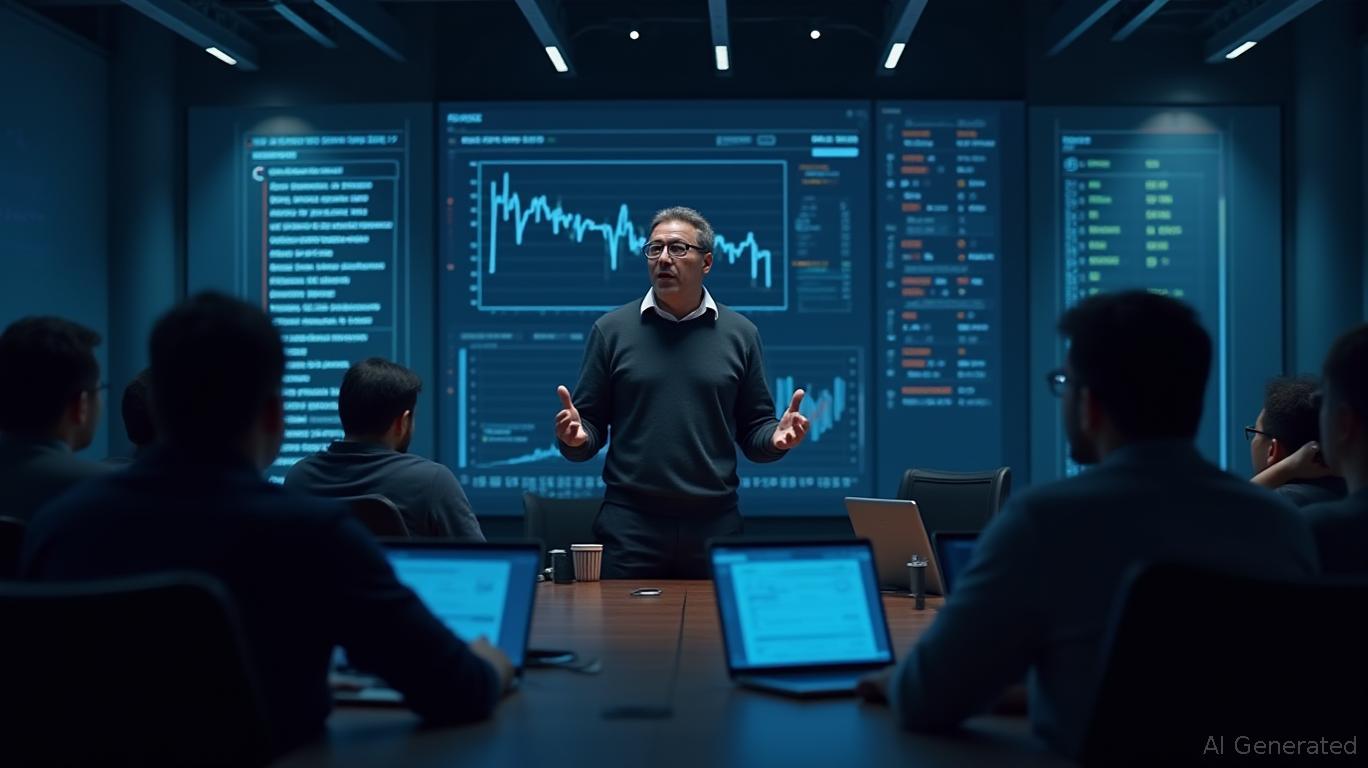Ethereum’s Fusaka Update: Enhancing Scalability While Maintaining Security
- Ethereum's Fusaka Upgrade (Dec 3, 2025) introduces PeerDAS to enhance L2 scalability via probabilistic data verification, reducing transaction costs and processing times. - Phased blob capacity expansion (6→15→21 per block) balances scalability with network stability, supported by 11 EIPs including spam resistance and gas limit adjustments. - The upgrade aims to attract developers to Ethereum's ecosystem by lowering L2 fees, while addressing revenue challenges through DeFi integration and testnet validat

Ethereum’s forthcoming Fusaka Upgrade, set to go live on December 3, 2025, represents a major milestone in the network’s ongoing efforts to improve scalability. This upgrade will introduce PeerDAS (Peer Data Availability Sampling), an innovative method that allows nodes to confirm data integrity without needing to download entire blocks, thereby improving data availability for Layer 2 (L2) solutions. By addressing a key scaling challenge, PeerDAS enables rollups and other L2 technologies to function more efficiently, leading to lower transaction fees and faster processing. The Fusaka Upgrade is a central part of Ethereum’s 2025 strategy, which focuses on foundational improvements to support the expanding needs of decentralized finance (DeFi), gaming, and asset tokenization.
One of the main features of the Fusaka Upgrade is the gradual increase in Ethereum’s blob capacity, which refers to the storage of data packets essential for rollups. The network will initially support six blobs per block, with two subsequent Blob Parameter Only (BPO) upgrades planned to raise this limit to 15 and then 21 blobs per block. This step-by-step process is designed to enhance scalability while maintaining network reliability, ensuring that the core layer can manage increased transaction loads without sacrificing security. Vitalik Buterin,
The Fusaka Upgrade encompasses 11 Ethereum Improvement Proposals (EIPs) aimed at boosting efficiency and scalability. Notably, EIP-7594 (PeerDAS) and EIP-7917 (Deterministic Proposer Lookahead) are considered key changes. EIP-7825 introduces mechanisms to resist spam and prevent network slowdowns, while EIP-7935 modifies the gas limit to support greater transaction volume. Developers have thoroughly tested these changes on testnets such as Holesky and Sepolia in October 2025, and a $2 million bug bounty program has been launched to encourage security reviews. The Ethereum community is taking a careful approach to deployment, timing the mainnet launch with the Devconnect conference in November 2025 to ensure all stakeholders are aligned.
The Fusaka Upgrade is expected to have a significant economic impact. By reducing gas fees on L2s, it is likely to draw more developers to the Ethereum ecosystem, spurring innovation in DeFi, gaming, and tokenized assets. For example, projects like
Looking forward, the Fusaka Upgrade is expected to pave the way for Ethereum to reach a theoretical throughput of 12,000 transactions per second by 2026, making it a strong contender for high-volume applications. However, the ultimate success of the upgrade will depend on effective testnet performance and ongoing refinements after launch. Developers are also preparing for future enhancements, such as potentially reducing block times to six seconds, which could further improve user experience. As the blockchain industry evolves, Ethereum’s commitment to gradual, security-focused upgrades highlights its importance as a core platform for Web3 development.
Disclaimer: The content of this article solely reflects the author's opinion and does not represent the platform in any capacity. This article is not intended to serve as a reference for making investment decisions.
You may also like
Solar radiation reveals previously undetected software flaw in Airbus aircraft fleet
- Airbus issues emergency directive to update A320 fleet software/hardware after solar radiation-linked flight-control incident caused JetBlue's emergency landing. - EU Aviation Safety Agency mandates fixes for 6,000 aircraft, risking Thanksgiving travel chaos as airlines face weeks-long groundings for repairs. - Solar interference vulnerability, previously flagged by FAA in 2018, highlights growing software reliability challenges in modern avionics systems. - Analysts call issue "manageable" but warn of s

Khabib's NFTs Ignite Discussion: Honoring Culture or Taking Advantage?
- Khabib Nurmagomedov's $4.4M NFT collection, rooted in Dagestani heritage, sparked controversy over cultural symbolism and legacy claims. - The project sold 29,000 tokens rapidly but faced scrutiny for post-launch transparency gaps and parallels to failed celebrity NFT ventures. - NFT market recovery (2025 cap: $3.3B) highlights risks like "rug pulls" and volatility, despite celebrity-driven momentum. - Concurrent trends include crowdfunding innovations and sustainability-focused markets like OCC recyclin

Ethereum Updates Today: Fusaka Upgrade on Ethereum Triggers Structural Deflation Through L2 Collaboration
- Ethereum's Fusaka upgrade (Dec 3, 2025) introduces EIP-7918, linking L2 data costs to mainnet gas prices, boosting ETH burn rates and accelerating deflationary trajectory. - PeerDAS and BPO forks reduce validator demands while enabling scalable 100k TPS growth through modular upgrades, avoiding disruptive hard forks. - Analysts predict 40-60% lower L2 fees for DeFi/gaming, with institutional ETH accumulation and a 5% price rebound signaling confidence in post-upgrade value capture. - The upgrade creates

Bitcoin News Update: Stablecoin Growth Drives Cathie Wood's Updated Bullish Outlook on Bitcoin, Not Market Weakness
- ARK's Cathie Wood maintains $1.5M Bitcoin long-term target despite 30% price drop, adjusting 2030 forecast to $1.2M due to stablecoin competition. - She attributes market volatility to macroeconomic pressures, not crypto fundamentals, and highlights Bitcoin's historical liquidity-driven rebounds. - UK's "no gain, no loss" DeFi tax framework and firms like Hyperscale Data ($70.5M BTC treasury) reflect evolving regulatory and strategic dynamics. - Bitfarms' exit from Bitcoin mining to AI HPC by 2027 unders
